FEBRUARY 5, 2024: From our campsite in Alamogordo, we could see in the distance the Museum of Space History. This sounded interesting and we got organized quickly in the morning so that we would have time to start our day with a visit there.
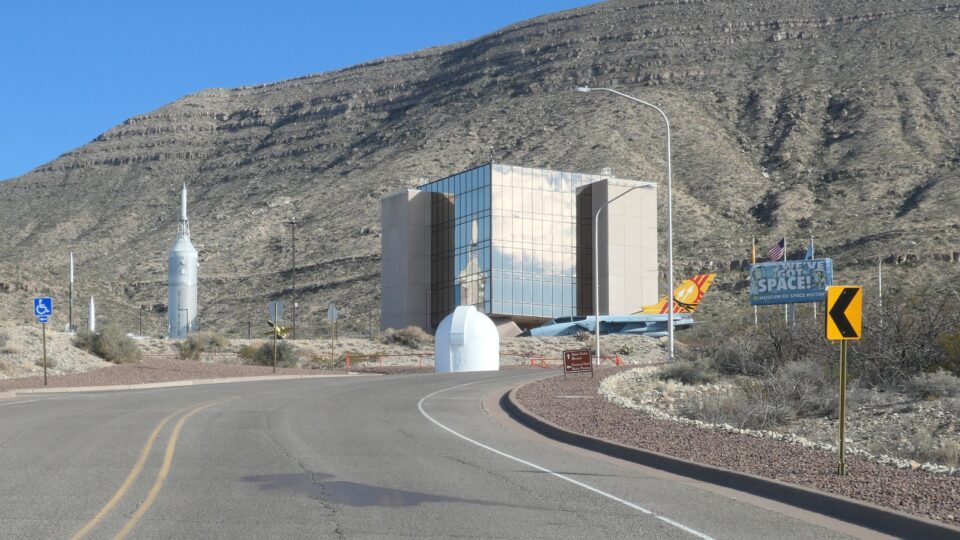
We arrived even before the museum opened, but this gave us some time to see the outdoor exhibits. These included the grave of Ham, the first chimpanzee in space, whose historic flight took place in 1961. Ham’s flight, lasting about16 minutes, helped clear the way for the launch of the United States’ first astronaut, Alan Shepard, into space a few months later. Although he was only 3 1/2 years old at the time, and despite the intense speed, g-forces, and weightlessness, Ham performed his tasks flawlessly.
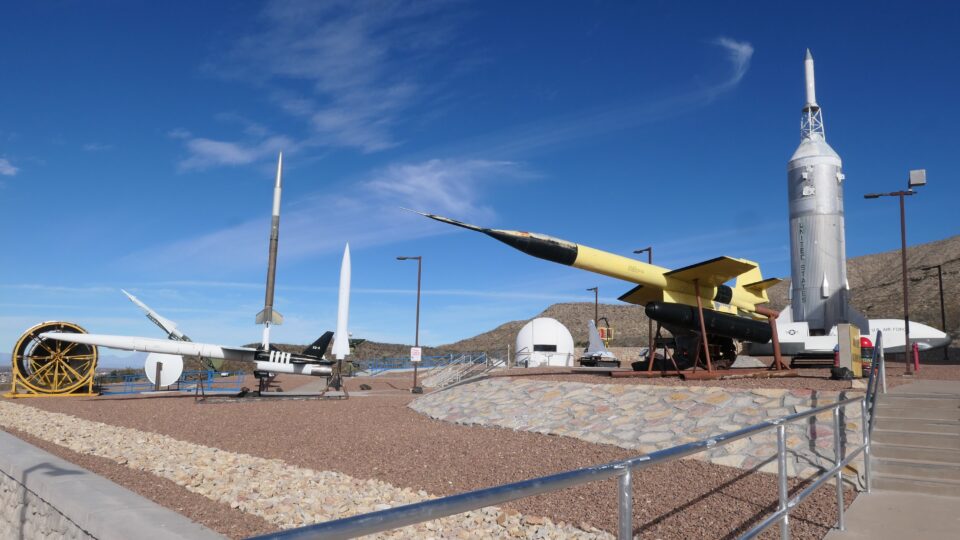
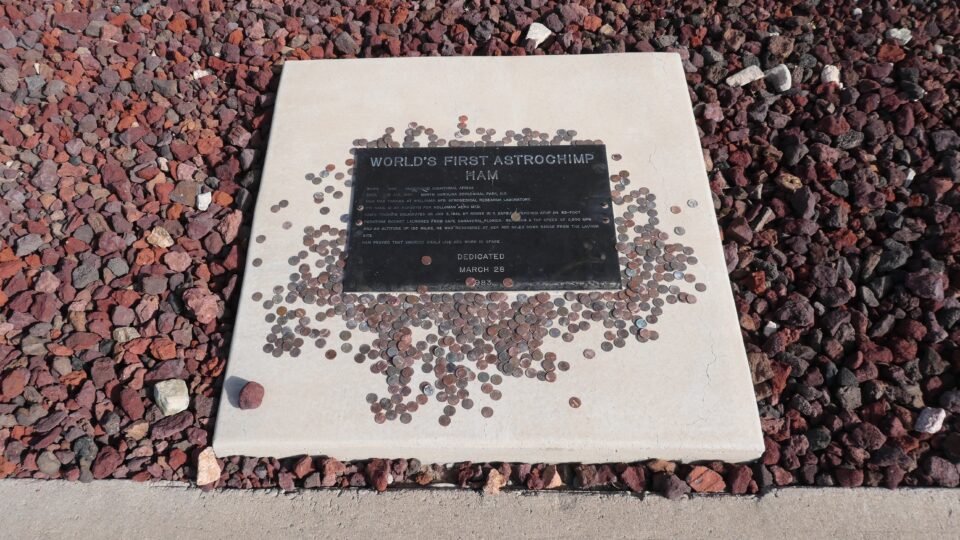
Among the exhibits, we also saw a V-2 rocket engine. The V-2 was initially developed by Germany as the world’s first long-range guided ballistic missile. It was used by the Nazis to wreak havoc on London, Antwerp, and other Allied cities. After the war, German scientists assisted the US to develop its own V-2 technology for research and defense. The rocket engine we saw here was used for research and tested at the White Sands Missile Range that we drove through yesterday.
Once the museum opened, after paying the entrance fee, we were told to take the elevator to the fifth floor and work our way down. Entering the elevator was amusing since the elevator interior was decorated to look like the control panel of a spaceship.
Each floor had a specific topic. The fifth floor, where we started was all about the history of space exploration, starting from 1608, with the first telescope and up to the modern era.
Here there was also a map of the New Mexico Space Trail. The trail, established in 2010, has 52 sites in the area between Las Cruces and Taos that are related to the past, present and future of spaceflights. These include the White Sands Missile Range Headquarters, the National Solar Observatory, the National Museum of Nuclear Science & History, several astronaut training sites, and so on. New Mexico’s large expanse of uninhabited land, level terrain, and predominantly clear skies meet the criteria necessary for playing such a large role in the history of spaceflights.
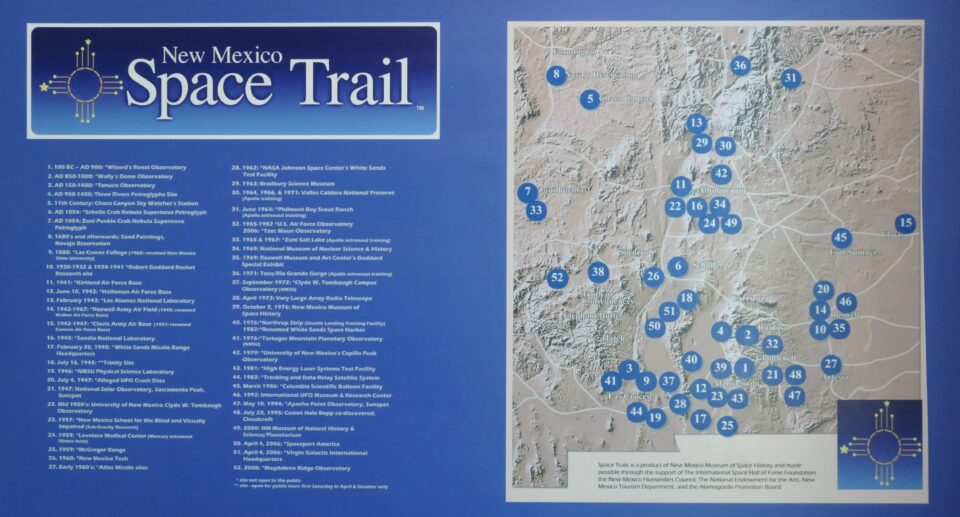
Between each floor of the museum was a walkway alongside the floor to ceiling windows of the building, providing beautiful desert views.
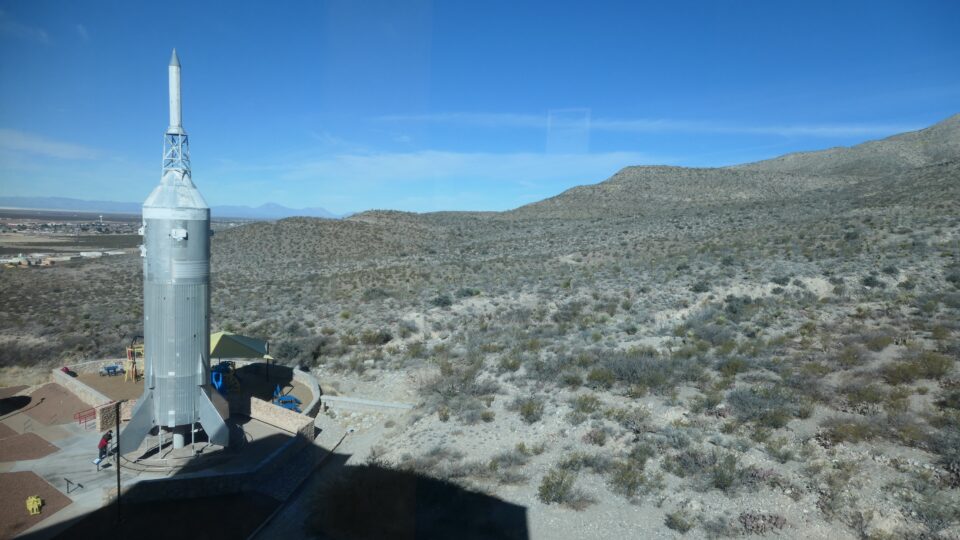
The fourth floor of the museum was about rockets. Some of the displays were interactive, such as a simulator where you try to land a space shuttle on a runway. After crashing several times, I moved on to the next display.
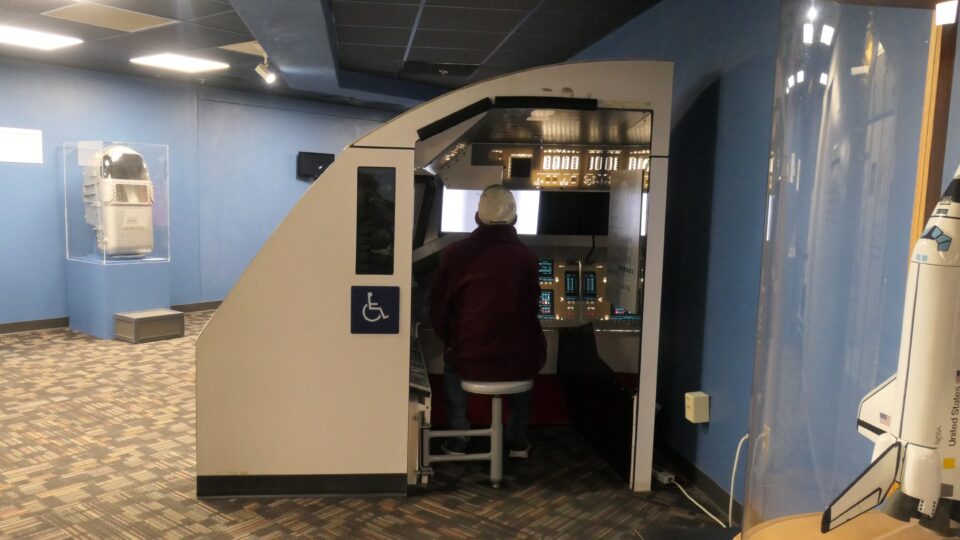
The third floor was about the Apollo space program and included a display of a moon rock, more officially known as a lunar sample, from the Apollo 17 mission. It is thought to be 3.7 billion years old, making it probably the oldest thing that most museum visitors will ever see.
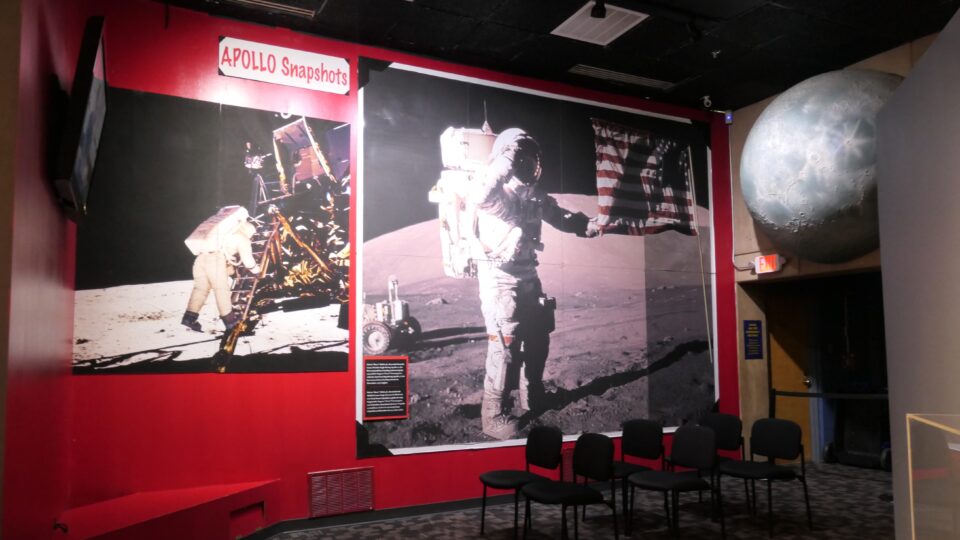
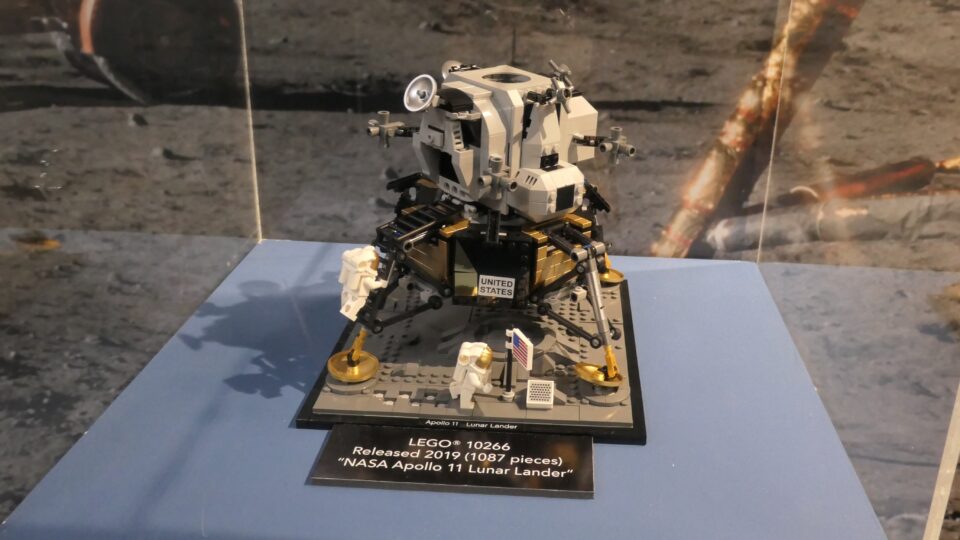
The second floor was all about the intersection of Sci-Fi with Sci-Fact, and included a large display about Star Trek. Here was also a small theater that played clips of old Sci-Fi movies, including When Worlds Collide, The War of the Worlds, Godzilla, The Jetsons, and so on. On the last floor was a large play area for kids complete with spacesuits – pants, jackets, helmets, gloves, etc. for them to try on. I couldn’t help thinking that all my grandchildren, even with their large age differences, would have found this museum enjoyable.
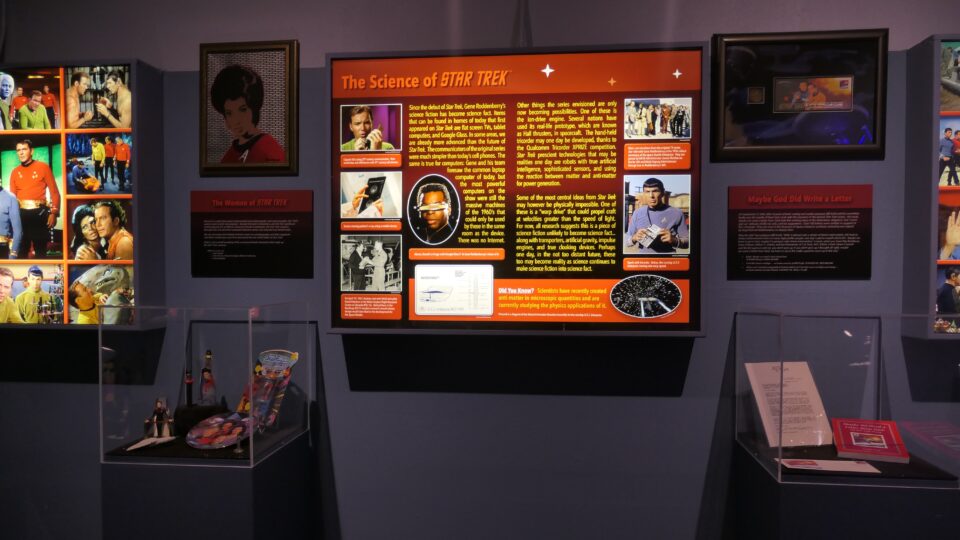

After the visit to the museum, we started the long 4-hour drive to Las Vegas – not to the famous Las Vegas in Nevada, but a small city also called Las Vegas in New Mexico. We drove on small back roads with beautiful scenery the whole way. The area was very sparsely populated. Every once in a while, we would pass a gated entrance to a ranch, often with no house in sight. The towns we drove through consisted of just a few buildings, and most stores we saw were closed.
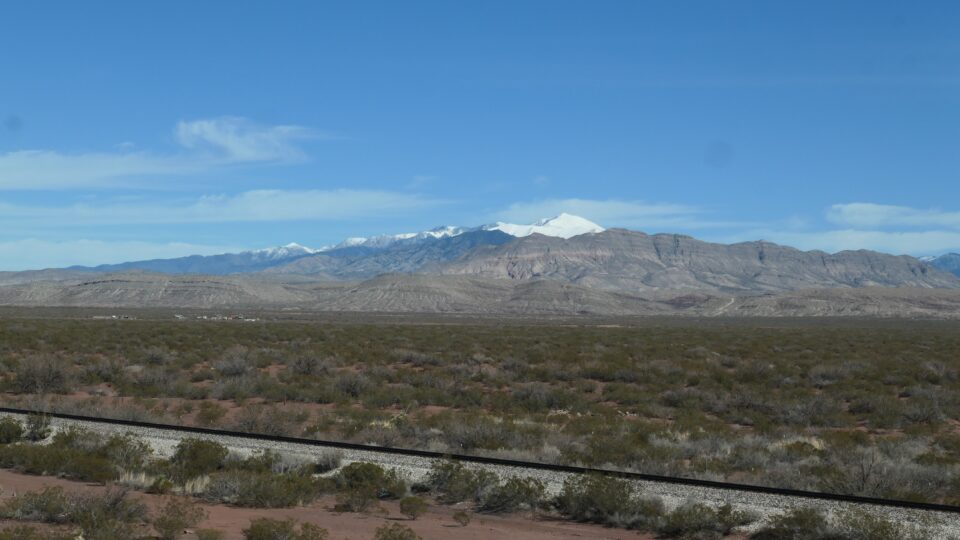
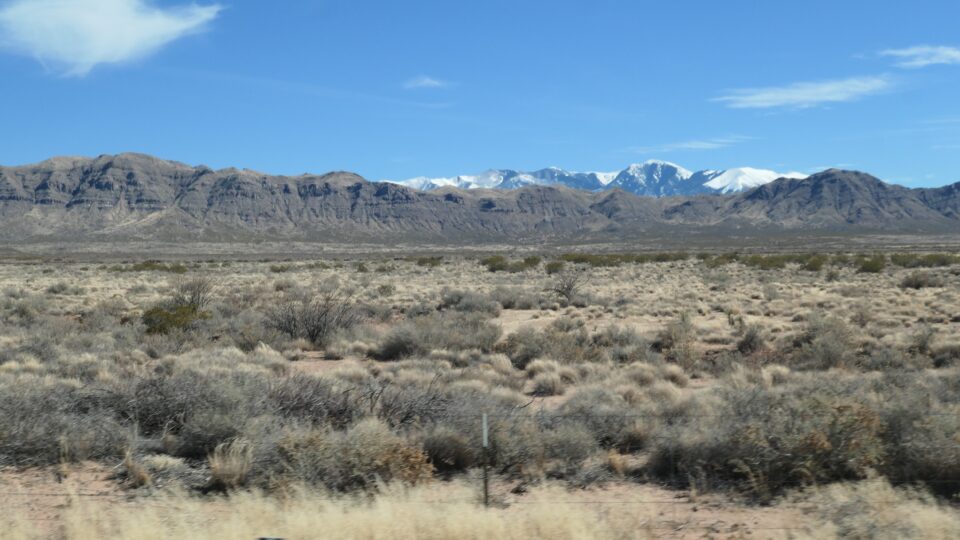
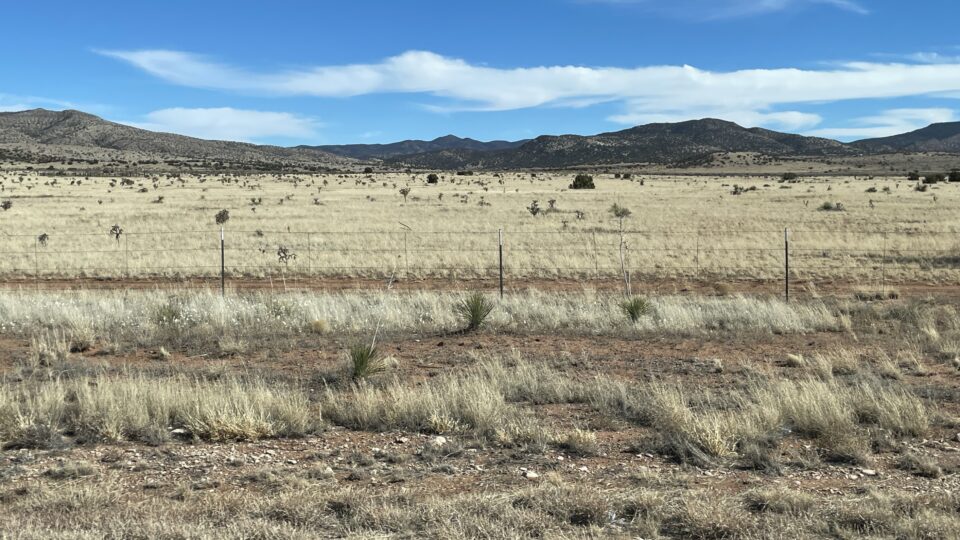
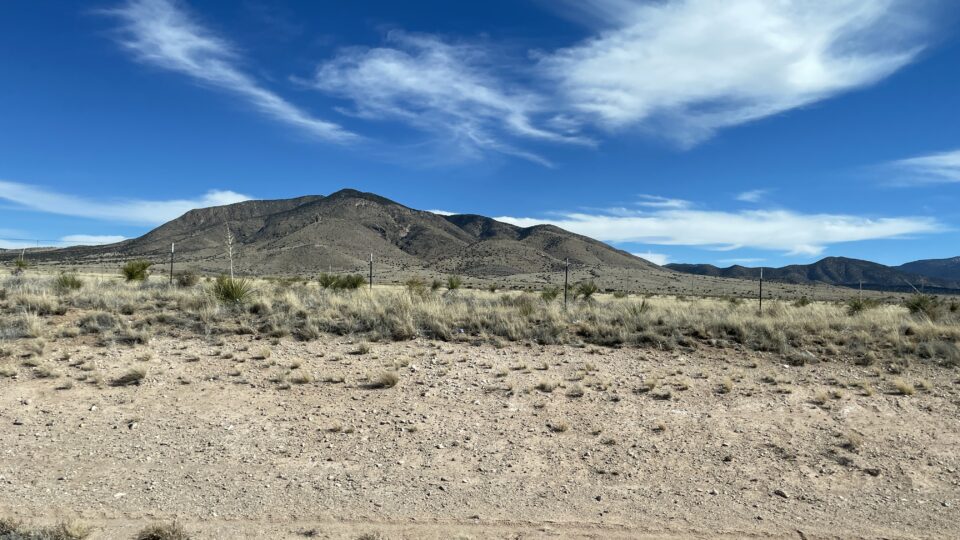
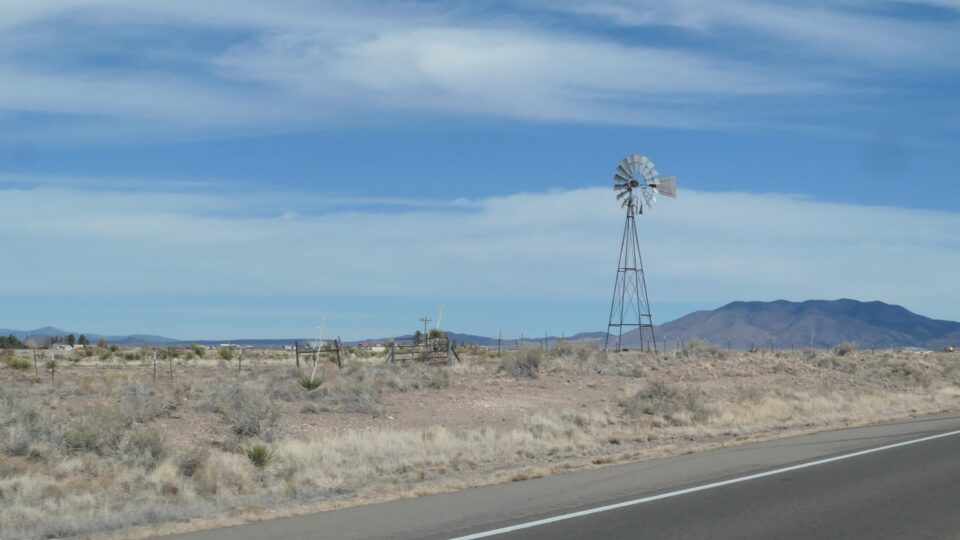
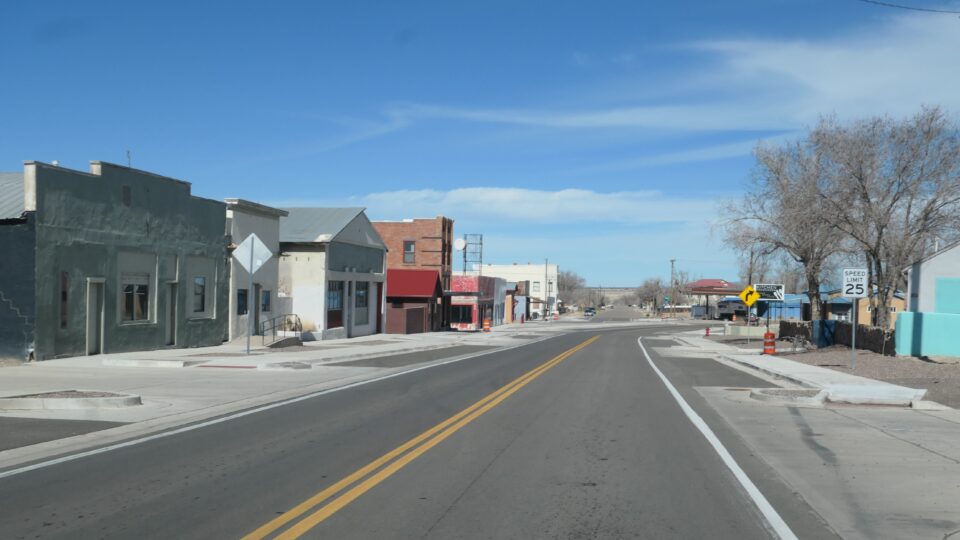
On the way we passed the small town of Vaughn (population 286 in 2020) where two main railroad lines intersect. As we drove by, a long train passed with some Walmart cars. This was exciting for me, because the previous evening I had listened to a NY Times Daily podcast about these freight trains and how freight train robberies are now making a revival.
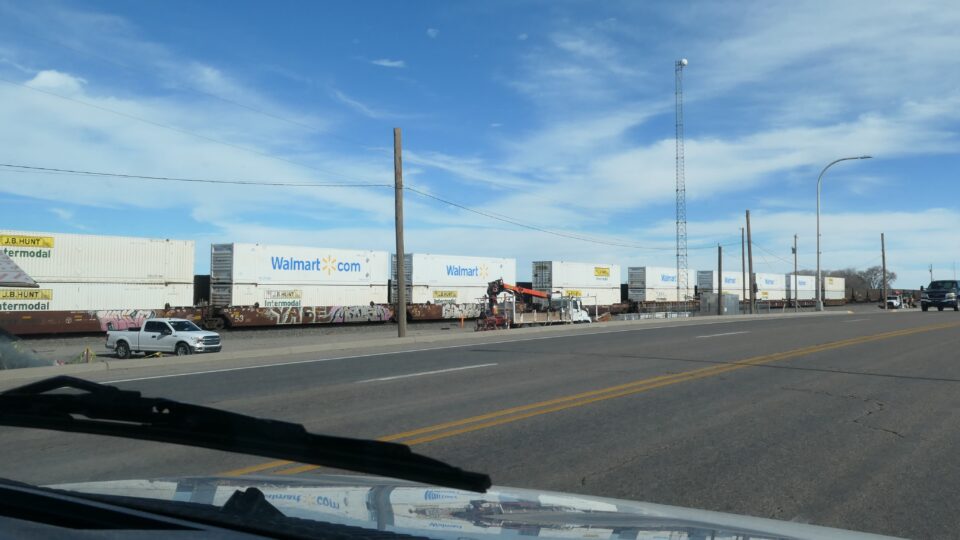
With the growth of e-commerce, the amount of cargo these trains carry has greatly increased over the last few years. Imported goods enter the country at ports in California and are then loaded on freight trains to take them eastward. These trains are very long – they can reach 3 miles in length – and are usually manned by just two people.
In the desolate areas of Arizona and New Mexico, one way the robbers operate, is that they disable the train by opening a valve or cutting a line that causes the train to stop. Once stopped, they empty train cars into waiting trucks. Since the train is so long, it takes quite some time for the workers on the train to reach the problem and fix it. In the meantime, the robbers have driven off with the goods. Train cars with Walmart logos make especially good targets. Robbers usually bring the stolen goods to a warehouse, and then resell the items on e-commerce sites.
We finally reached Las Vegas in the late afternoon. Las Vegas in the mid-1800’s was the largest city in New Mexico. It is located on what was the Sante Fe Trail, and after about 700 miles of wilderness, it was the first city the pioneers reached. They needed to replenish their supplies and commerce in Las Vegas prospered. When the railway came through in 1879, it brought in more business. However, after the Great Depression and the decline of rail travel, the economic growth of the city slowed. Today Las Vegas has a population of about 13,000 and more than a quarter of its residents live below the poverty line.
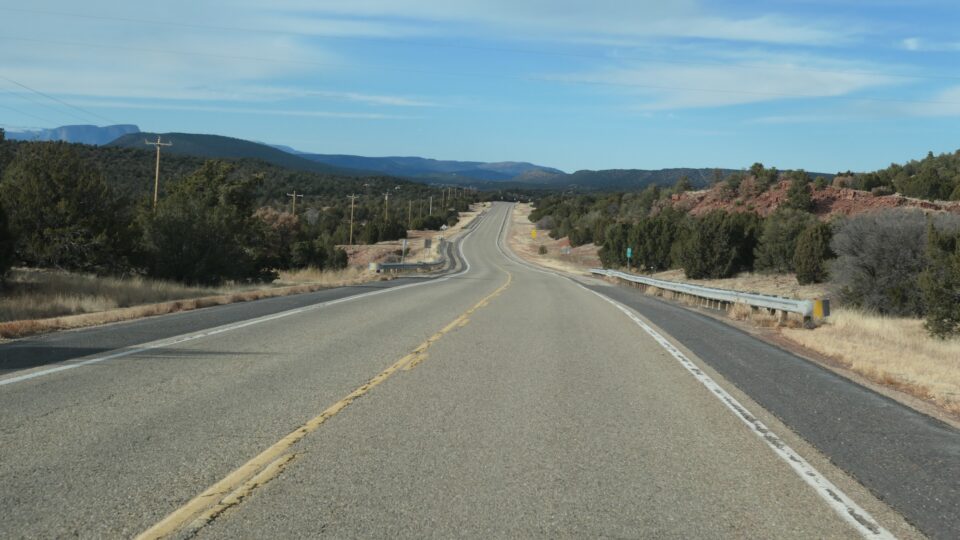

Our first stop in Las Vegas was the Masonic cemetery. Within the Masonic cemetery, is a separate Jewish section called the Montefiore cemetery, which was established in 1883. Each spring, participants from Jewish communities around the state come to this historic cemetery for an annual cleanup. This serves not only to keep the cemetery in good condition, but also fosters awareness of the Jewish history of Las Vegas.
Like in the other towns we visited in the area, the Jewish citizens of Las Vegas were economically successful and quite involved in civic affairs. Some of the headstones in the Montefiore cemetery are in the style of the fraternal organizations that Jewish members belonged to.
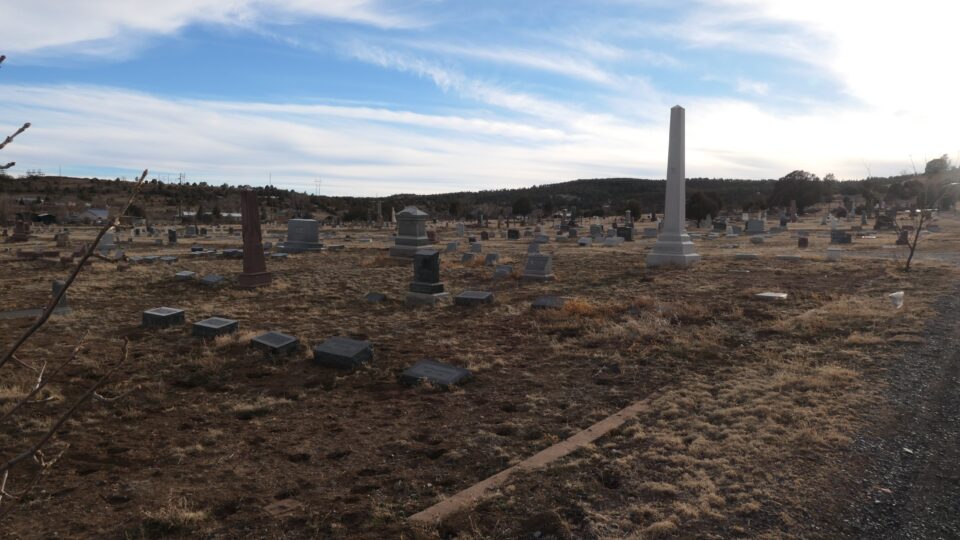
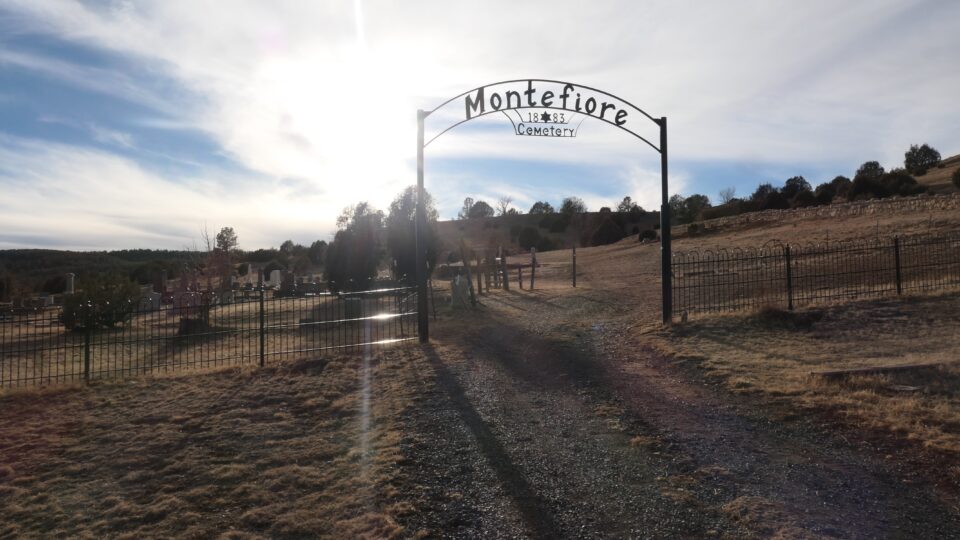
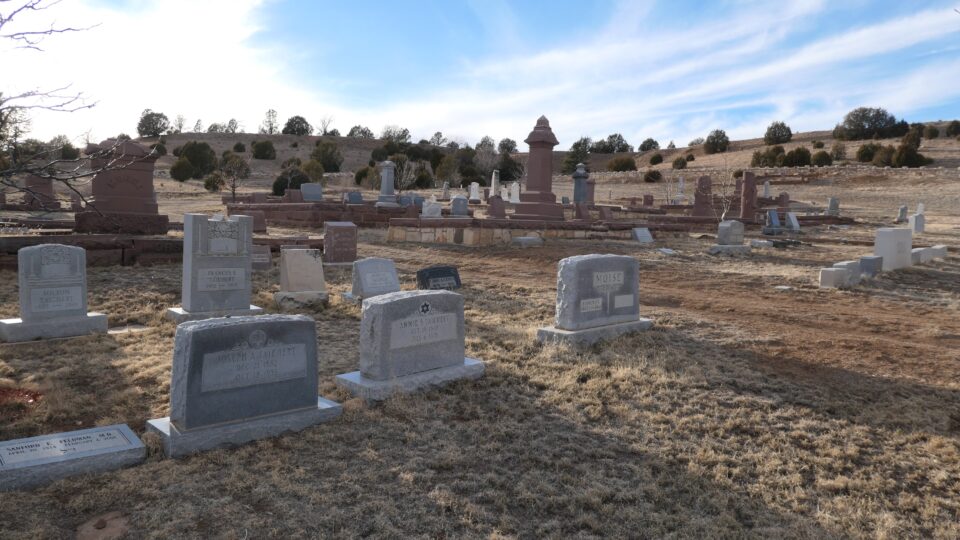
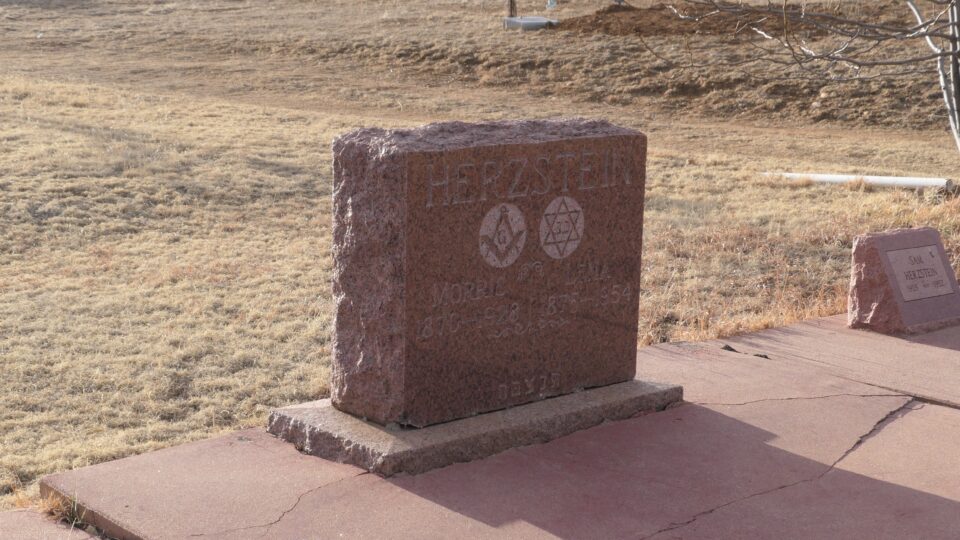
From the cemetery, we drove to the Bridge Street Historic District of old Las Vegas. Bridge street was the commercial center of the city and many of the buildings retain their original style. The city has over 900 buildings listed in the Historic Registry. Most of those have plaques with their history. We were looking for the plaque indicating the location of the former Ludwig W. Ilfeld Hardware Store on Bridge Street.
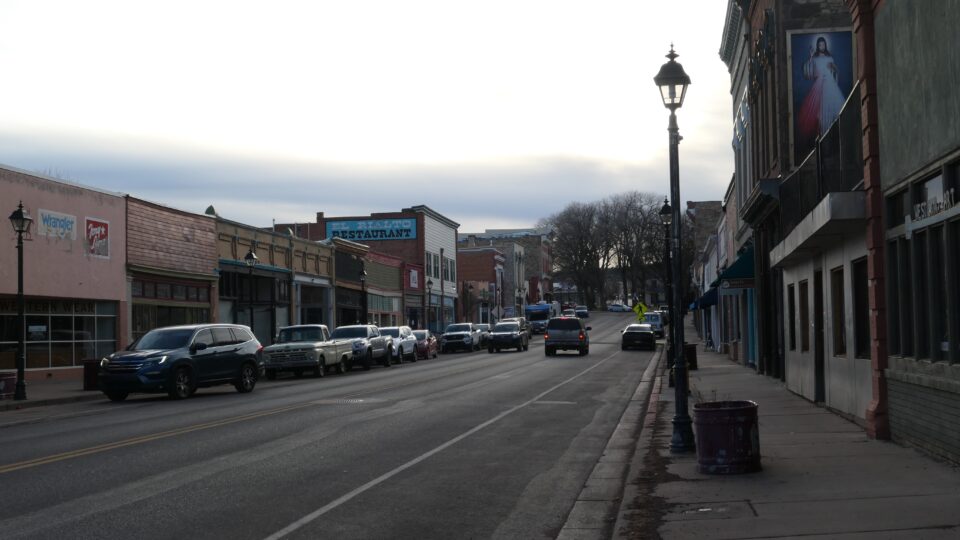
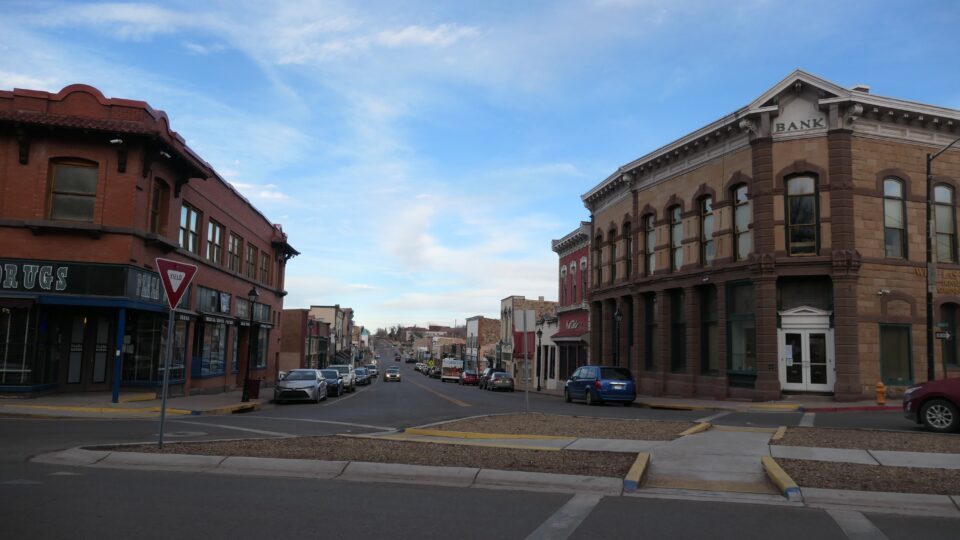
The hardware store of Ludwig William Ilfeld was one of Bridge Street’s most important businesses. Ilfeld first came to Las Vegas in 1891 to work for his uncle Charles Ilfeld, one of New Mexico’s most successful businessmen, and eventually took over the store from him. The Ilfelds, like other Jewish pioneer merchants, ranchers, wool and livestock traders, played a major role in the social and economic development not only of Las Vegas, but all over nineteenth century New Mexico.
At the end of Bridge Street is the Las Vegas Plaza. On the plaza, is the the Plaza Hotel, built in 1882 and which still operates as a luxury hotel. Next door is the Charles Ilfeld Building from where the Charles Ilfeld Company operated. Today it is part of the Plaza Hotel. On the way back to the car, we stumbled upon another plaque – Isidor Stern’s Famous Dry Goods Store 1881. Another Jewish business.
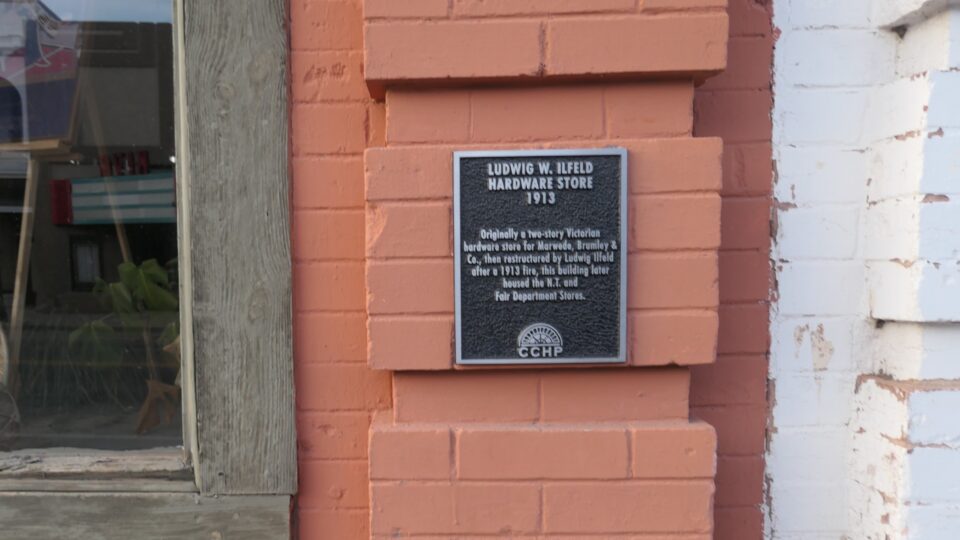
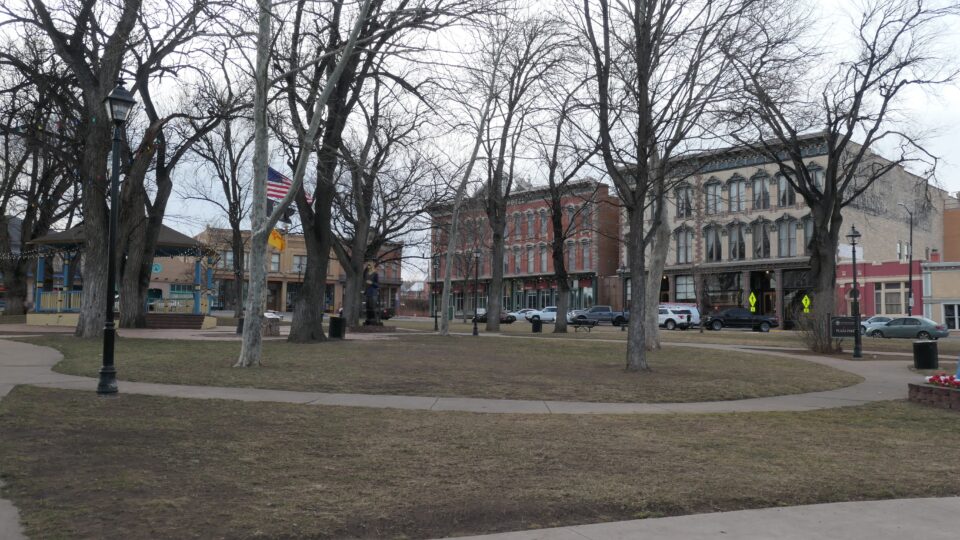
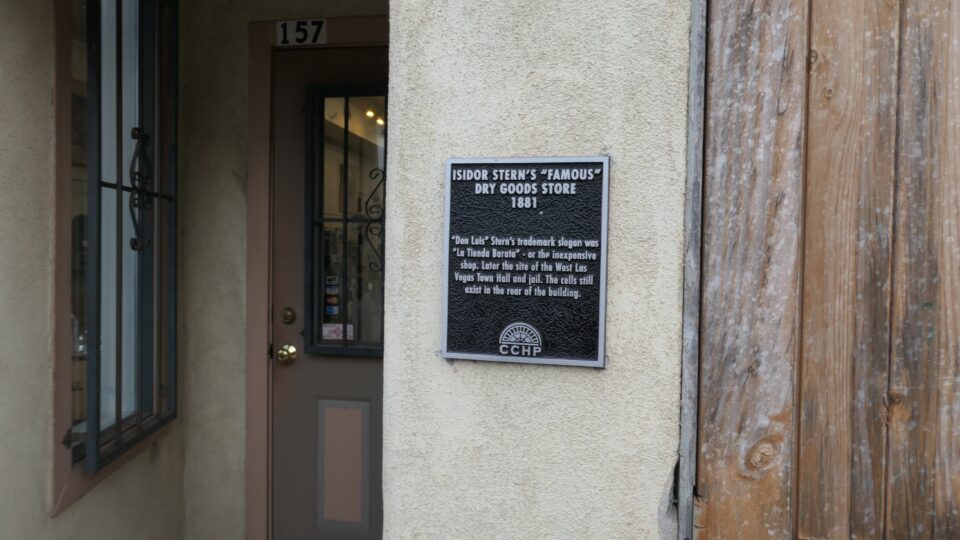
In the Las Vegas cemetery, the Jewish section was called the Montefiore Cemetery. Congregation Montefiore was the first Jewish congregation in New Mexico, and the congregants built a synagogue in Las Vegas in 1886. It operated for many years as a vibrant Reform congregation. In 1922, they dedicated a new, larger building. However, as the Jewish population in Las Vegas decreased, the congregation was officially dissolved in 1955. The synagogue was sold and was then used for many years as a church. Today a very small number of Jews still live in Las Vegas, and in 2023, when the church announced that it would be selling the property, they raised funds with a GoFundMe campaign and were able to buy back the building.
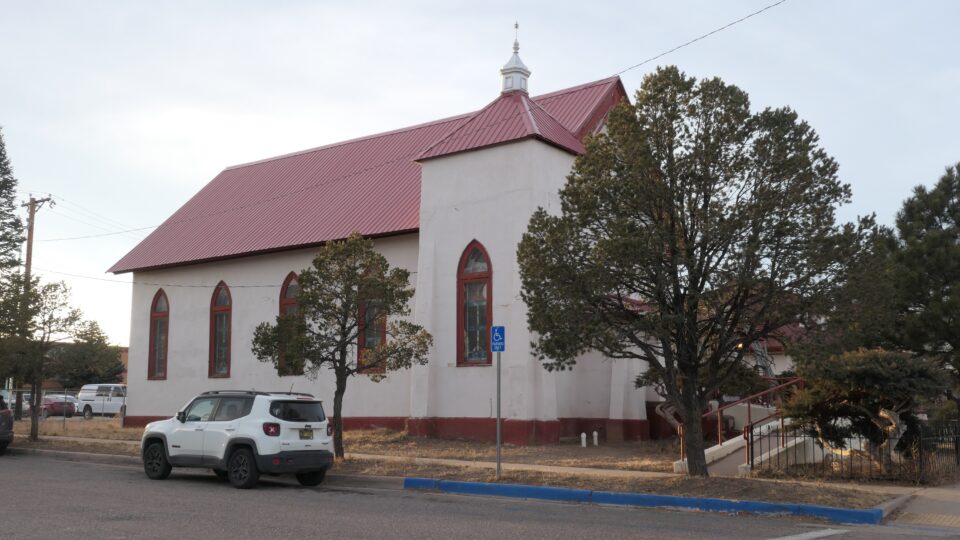
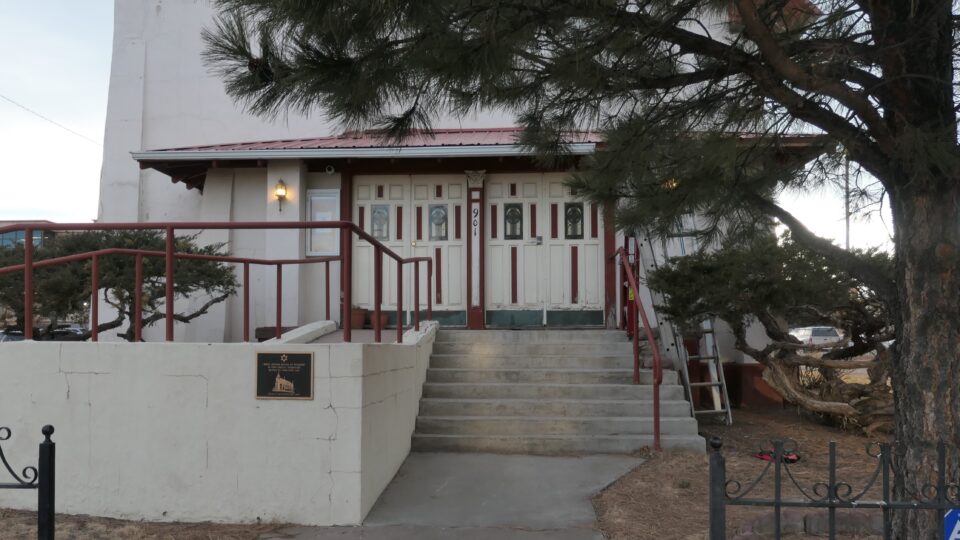
We found the building in a residential area of the city, adjacent to the university. Besides the historical marker that declared “First Jewish House of worship in New Mexico Territory moved to this site 1922”, on the building we saw a mezuzah on the doorframe, and a poster supporting Israel near the entrance.
As our last stop in Las Vegas, we went to find the plaque that commemorates the Rosenthal Brothers General Merchandise Store 1903. The address was not in the best part of town, and we saw lots of come and go traffic. A car would park, someone would go inside a nearby building, and return to the car a few minutes later. It seemed to be a popular place for drug trafficking.
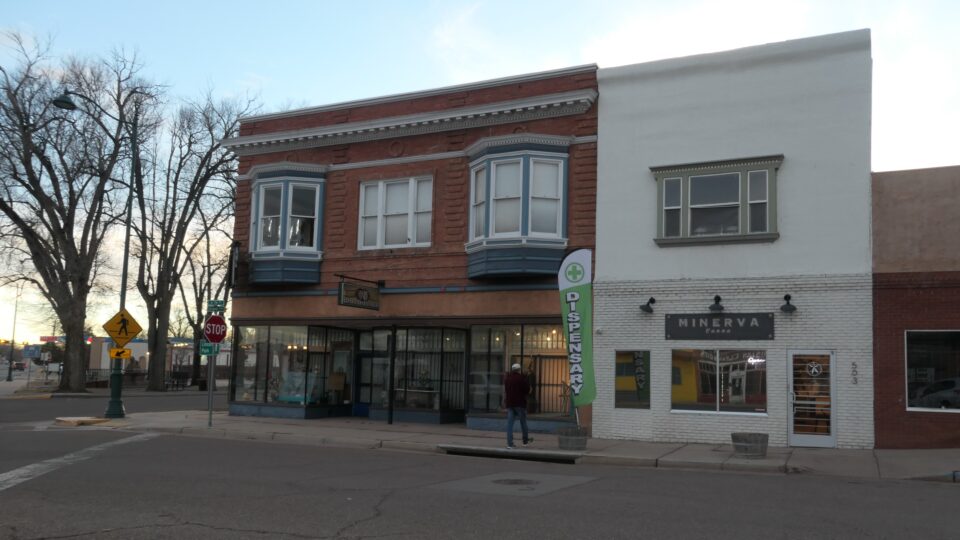
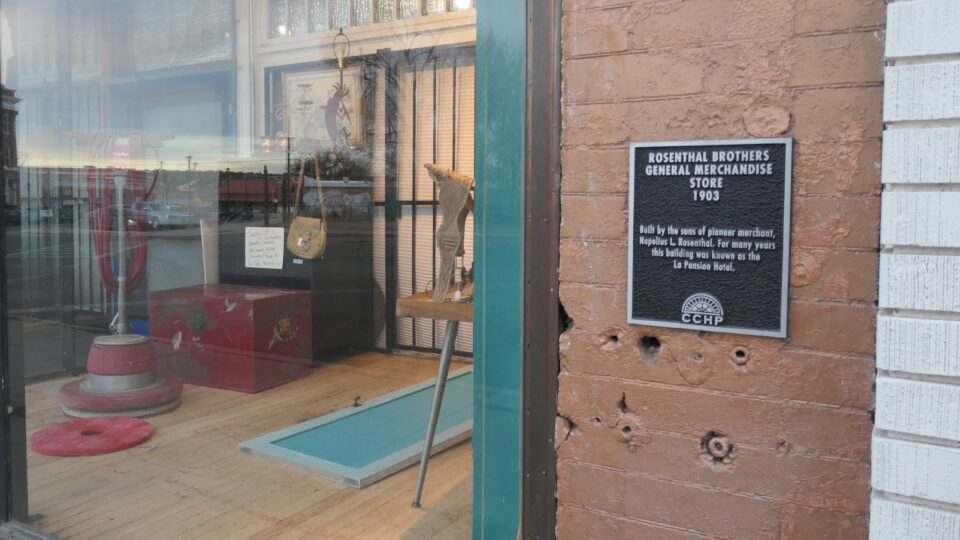
In looking on the internet for information about the Rosenthal Brothers, I came across a copy of the Las Vegas Free Press from June 29, 1892. On the front page of the newspaper, in the upper right, was an advertisement for the Rosenthal Brothers store. They sold fine furniture at low prices. However, what I found even more interesting, was the article that appeared next to the advertisement about the wedding of Mr. Leon Manko and Miss Jennie Rosenthal. The wedding took place in the home of the bride’s parents and the ceremony was witnessed by a large number of relatives and friends. The article continues:
The floral decorations were magnificent. The mantel was banked with potted plants and roses, and every available space held the fragrant beauties, while ropes of evergreen and roses hung above the doors and windows. Prof. Miller presided at the piano, with violin accompanist, and a few minutes after 8 o’clock the ever-familiar music of “Lohengrin” filled the room and the bridal party entered.
Little Eva Abramosky preceded the bride and groom, strewing flowers in their pathway, and the parents and other members of the family followed them. The bridal couple stood upon a white rug, beneath a beautiful floral bell of roses and lilies. Rabbi Freudenthal, of Trinidad, performed the beautiful and impressive ceremony. The bride was very lovely in a princess gown of delicate tan crepon, en train, and a long tulle veil, caught back with pearl pins. Her only ornament was a white rose, and she carried a bouquet of bridal roses. After the exchange of congratulations, the guests were invited to the dining rooms, where the tables, beautifully decorated with smilax and roses, fairly groaned with good things. The wedding cake was a marvel of beauty and sweetness, surmounted by a marriage bell and lilies.
The article continues with a detailed description of the festive meal, what was served, the names of many who attended and what gifts they gave to the new couple. Gifts included a silver water pitcher, a silver sugar bowl, a large porcelain vase, a parlor lamp, etc. During supper, the doorbell was repeatedly answered in response to dozens of telegrams received from far and near. Letters were also received from Europe.
I looked up what was meant by music of “Lohengrin”. Lohengrin is an opera by Richard Wagner. This article, more than anything else I have read, gave me an understanding of how opulent Jewish life was in Las Vegas, almost 130 years ago. This seemed to me to me more like a description of a wedding in cultured Europe rather than in Wild West USA.
We did not stay long by what was previously the Rosenthal store and continued toward our campground for the night, about 5 miles out of town. Despite not being in the city, we had the fastest WiFi ever. Wherever we stay, Mark always measures the WiFi upload / download speed on his phone, so when I say it was the fastest, it is not just that it felt fast, but Mark’s empirical data backed up the impression.
Tomorrow we were supposed to continue northward to Taos. Taos, at an elevation of almost 7000 feet, is the highest point in New Mexico. Snow is predicted and travel advisories are in effect. Based on this, we decided to skip Taos and go tomorrow morning directly to Los Alamos and search there for Oppenheimer instead.

Loved the beautiful old buildings and hearing the stories of a vibrant Jewish community.